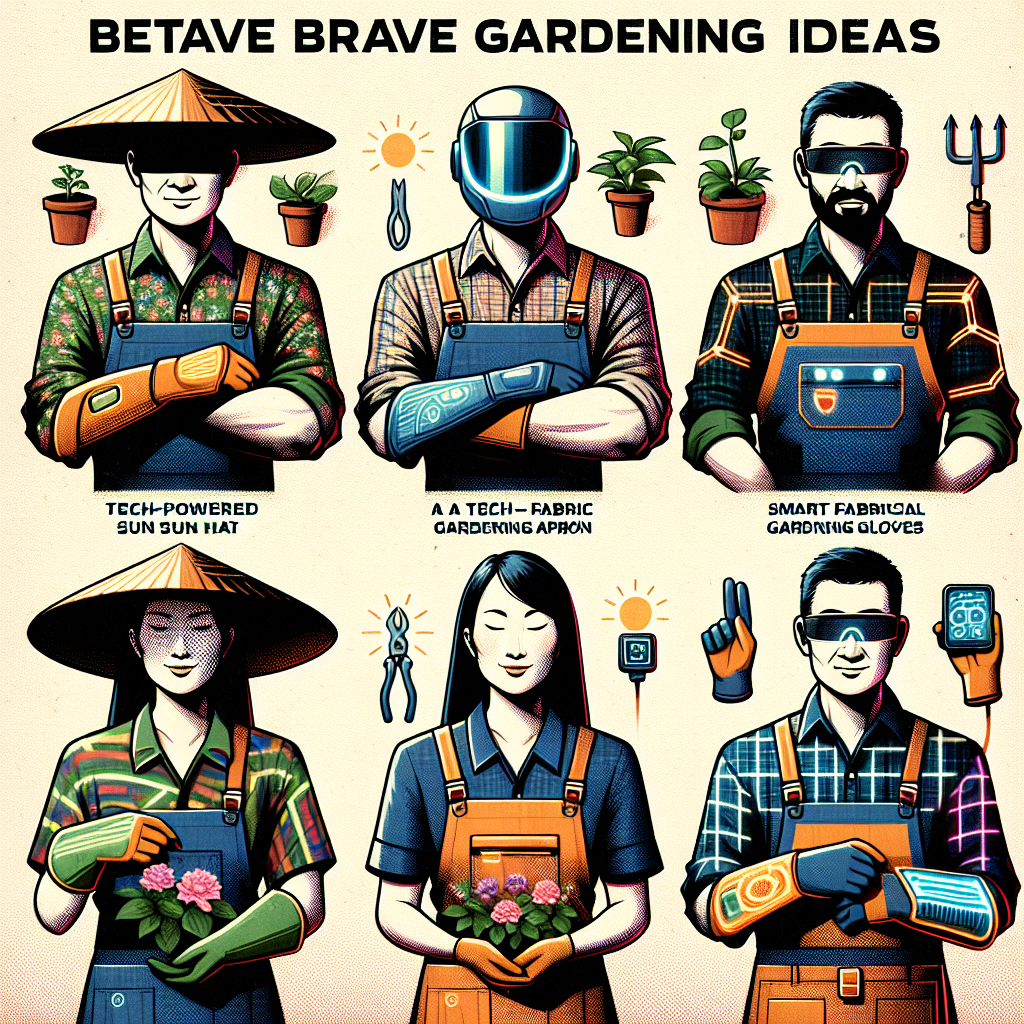Introduction
Navigating through the myriad of clothing options for everyday activities requires particular attention when it comes to gardening. The right outfit not only facilitates ease of movement but also ensures safety and protection from various environmental factors. This post aims to arm gardeners with knowledge about the key elements of gardening attire, focusing on the intersection of practicality, comfort, and protection. As we delve into the selections suitable for various seasonal conditions and sustainable options, let us unpack the importance of making informed decisions about one’s gardening wardrobe.
Key Elements of a Gardening Outfit
Headgear
It is widely acknowledged by dermatologists that headgear is pivotal in shielding one from harmful UV rays. A wide-brimmed hat, for instance, offers substantial coverage for the face and neck.
Tops
Selecting shirts crafted from breathable, moisture-wicking fabrics is crucial as they contribute to temperature regulation and comfort. Horticultural professionals often recommend garments with long sleeves for additional protection.
Bottoms
When it comes to bottoms, it is vital to choose pants or shorts that combine durability and flexibility. This design decision speaks to the need for ensuring protection against thorns and insects, while allowing for a range of motion.
Footwear
Footwear should never be overlooked, as many gardening injuries are foot-related. Industry experts advise on closed-toe shoes that provide ample support and mitigate the risk of injury from tools or heavy objects.
Accessories
Accessories such as gloves, aprons, and knee pads are instrumental in enhancing the gardening experience. Beyond comfort, these essentials offer protection against physical strain and injury.
Choosing the Right Fabrics
Expert advice on selecting moisture-wicking and breathable materials
Garments manufactured with moisture-wicking fabrics minimize the discomfort of perspiration, which is paramount during physical labor. These specialized fabrics facilitate a microclimate that keeps the skin dry and comfortable.
Discussion on the importance of UV protection in fabrics
Ultraviolet Protection Factor (UPF) rated fabrics are increasingly recognized for their role in safeguarding the skin. Such materials undergo rigorous testing to ensure their efficacy in blocking ultraviolet radiation.
Case study: Benefits of clothes with UPF protection
To illustrate, a study conducted by the Skin Cancer Foundation demonstrated that individuals wearing UPF-rated clothing exhibited significantly lower instances of sunburn and long-term skin damage.
Season-Specific Gardening Outfits
Spring
Spring gardening outfits should account for the unpredictability of weather patterns, incorporating layers that can be adjusted throughout the day. Water-resistant footwear is also a prudent choice during the typically muddy season.
Summer
For the summer months, horticulturists advocate for lightweight, breathable clothing that allows for air circulation, thus mitigating the effects of intense heat.
Fall
As temperatures start to drop, incorporating versatile attire that can be easily layered proves beneficial for maintaining thermal comfort during fall gardening activities.
Winter
For winter gardening, thermal insulation is of paramount importance. Outfits should consist of weatherproof outer layers to protect against moisture and cold winds, alongside insulating inner layers to retain body heat.
Special Considerations for Sustainable Gardening
Exploration of eco-friendly clothing options
The rise of eco-consciousness in gardening practices extends to attire, with a growing preference for garments made from sustainable materials such as organic cotton and recycled polyester.
Insight from industry experts on the impact of sustainable fashion choices
Experts claim that opting for clothing made from eco-friendly materials can significantly reduce the overall environmental footprint of one’s gardening practices.
Case study: Benefits of organic cotton gardening clothes
A relevant case study shows gardeners who chose organic cotton experienced not only personal satisfaction from making an environmentally sound choice but also reported the material's superior comfort and durability.
Maintenance and Care Tips for Gardening Clothes
Guidelines on washing and storing gardening attire
Proper care begins with adherence to washing instructions specific to the type of fabric. Storage in well-ventilated spaces prevents mildew and extends the apparel's usability.
Expert advice on extending the lifespan of gardening outfits
Experts underscore the importance of regular maintenance, including timely repairs of tears and the application of protective treatments where applicable.
Importance of repairing and repurposing old gardening clothes
Adopting a 'repair rather than replace' mindset contributes to sustainability and offers a unique opportunity to customize one’s gardening attire.
Conclusion
In summary, an appropriate gardening outfit is an amalgamation of practicality, protection, and personal preference. The insights presented underline the significance of making informed choices that enhance comfort and safety while aligning with sustainable practices. Gardeners are encouraged to integrate these guidelines into their gardening routine and to engage in sharing their experiences and tips for optimizing gardening outfits.
In conclusion, dressing appropriately for gardening is essential for comfort, protection, and functionality. By following the expert advice and industry insights provided in this guide, gardeners can optimize their gardening experience and enjoy their time outdoors to the fullest. Let's continue to cultivate our gardens with style and practicality!
Topics




